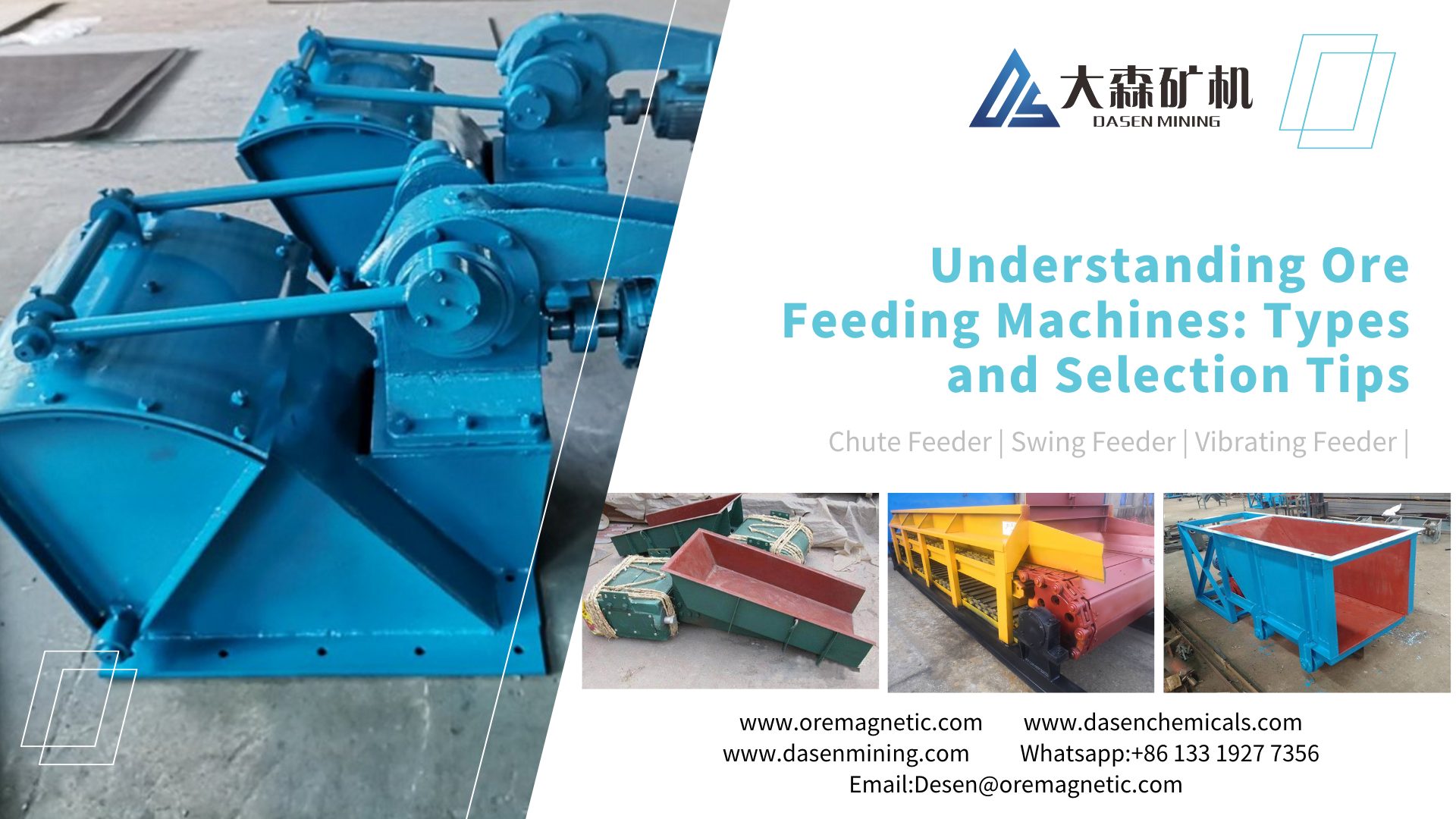How to Select the Best Feeder for Your Ore Processing Plant?
Selecting the appropriate feeder for a mineral processing plant ensures efficient and effective operations.
Feeders are responsible for transferring material from storage to the processing equipment, and their performance can significantly impact the plant’s overall productivity.
Factors Affecting Feeder Selection:
- Particle size
- Feed rate
- Moisture content
- Abrasiveness
- Environmental conditions
Here are the common types of feeders used in mineral processing plants:
Vibrating Feeders
Description: Vibrating feeders are commonly used in the primary crushing stations. They come in heavy, medium, and light-duty versions.
Applications: Heavy-duty Vibrating feeders can handle feed sizes up to 1500mm and have a capacity of up to 1000 tons per hour. Medium-duty feeders handle feed sizes of 350-400mm, while light-duty feeders are suitable for feed sizes less than 160mm.
Advantages: They are robust and can handle large, heavy materials efficiently.
Chute Feeders
Description: Chute feeders are suitable for medium-sized materials with up to 450mm feed sizes.
Applications: They can be installed on the ground or suspended at the discharge outlet of a storage bin.
Advantages: They are versatile and can be used in various installation setups.
Swing Feeders
Description: Swing feeders are typically used for discharging materials from grinding mills.
Applications: They handle feed sizes of 0-50mm and operate intermittently.
Advantages: Simple structure and easy to manage, though they have lower accuracy and uniformity in feeding.
Vibrating Feeders
Description: Vibrating feeders are a newer type of feeder with a simple structure and small size.
Applications: They are suitable for a wide range of particle sizes (0.3-500mm) and provide uniform feeding.
Advantages: Easy to adjust feed rate, but not suitable for sticky materials and can generate noise and dust.
Disc Feeders
Description: Disc feeders are used for discharging fine materials from storage bins.
Applications: Suitable for materials with particle sizes less than 20mm. Closed disc feeders are used when the material has a high fine content, while open disc feeders are used in general conditions.
Advantages: They provide a controlled and consistent feed rate.
Choosing the right feeder depends on the material characteristics, feed size, required feed rate, and specific application needs. Proper selection and maintenance of feeders can enhance the efficiency and productivity of mineral processing operations.
Whatsapp:+86 133 1927 7356
Email:[email protected]

